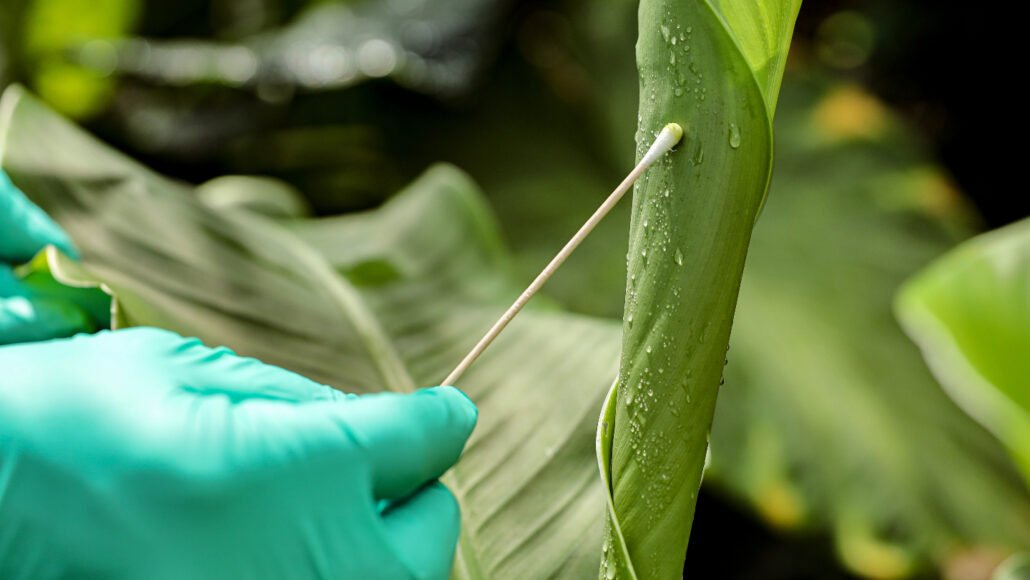In a groundbreaking development, researchers have unveiled a new DNA leaf swab technique that promises to revolutionize how we monitor biodiversity.

In a groundbreaking development, researchers have unveiled a new DNA leaf swab technique that promises to revolutionize how we monitor biodiversity.
With just 72 minutes of work, scientists were able to detect a staggering 52 different animals in Uganda’s Kibale National Park, showcasing the potential of this innovative method.
The process involved taking swabs from two dozen leaves within the park, which allowed for the precise genetic identification of 52 animals. Impressively, 30 of these animals could be identified down to the species level. This efficient DNA leaf swab technique relies on the collection of environmental DNA (eDNA) shed by various organisms, offering a swift and accurate means of assessing biodiversity.
Julie Lockwood, a biologist at Rutgers University, hailed the study’s findings, describing the ability to identify numerous species from just a few leaves as “cool and remarkable.” This breakthrough challenges the conventional notion of DNA being confined within cells, highlighting its presence throughout the environment.
The study emerged from a collaboration between biologists Jan Gogarten of the University of Greifswald and Christina Lynggaard from the University of Copenhagen. Gogarten, exploring eDNA sources from flies that accumulate genetic material from deceased animals and feces, decided to conduct leaf swabs while waiting for air filters to be set up. This impromptu approach yielded astounding results.
In contrast to the time-consuming process of setting up air filters, the swabbing took a mere 72 minutes across three areas of the park, averaging just three minutes per swab. This efficiency is a significant advantage over other sampling methods, such as air filters, which require a minimum of 30 minutes each, not including setup and cleanup time.
The eDNA analysis revealed both familiar and unexpected species, including iconic birds like the great blue turaco and mammals like the African bush elephant. This technique also offers practical benefits, as the swabs are more portable compared to larger sampling devices, making them an appealing choice for researchers.
With biodiversity under threat globally, this leaf swab technique represents a major stride in our capacity to document and respond to these changes. Its accessibility means that citizen scientists, including schoolchildren, could play a crucial role in contributing to biodiversity conservation efforts in their own communities.
Gogarten and Lynggaard are hopeful that their innovative technique will be adopted widely, empowering a broader community to contribute to the fight against biodiversity loss on a global scale.